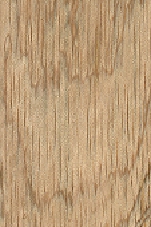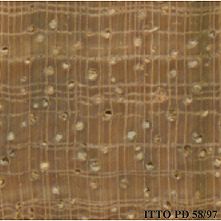
MACHANG (Mangifera indica)
Trade Name
Machang
Scientific Name
Mangifera indica L.
Family
ANACARDIACEAE
Common Names
Mangga (Indonesia); Malapaho (Philippines); Mangga (Philippines); Mangga (Thailand); Mangga (Malaysia); Mango (India); Mango (Pakistan); Pahutan (Philippines); Machang (Malaysia); Thayet (Myanmar); Asam (Sabah); Asai (Solomon Islands); Ma-muang-pa (Thailand); Mangga (India); Asam (Indonesia)
Scientific Name Synonyms
Rhus laurina Nutt.; Mangifera austro-yunnanensis Hu
Description Of The Tree
Botanical Description
It is a medium-sized to fairly large tree up to 40 m tall, and boles up to 120 cm in diameter.
Natural Habitat
The common mango has been cultivated for thousands of years and now has a pantropic distribution.
Natural Distribution
Wild populations can be found in Assam, India and Myanmar, especially the Assam-Chittagong Hills.
Plantations Available?
This species is widely cultivated in tropical and subtropical regions for its fruits.
Wood Identification
Anatomic Description Of Wood
Tyloses common. Vessels per mm2 less than 6 (rare). Simple perforation plates. Vessel-ray pits coarse throughout the ray cell. Intervessel pits large, 10 micras or more. Axial parenchyma in marginal or in seemingly marginal bands. Axial parenchyma confluent. Occasionally prismatic crystals in non-chambered axial parenchyma cells. 5 to 8 cells per parenchyma strand. 4 to 10 rays per mm (medium). Body ray cells procumbent with one row of upright and/or square marginal cells (Kribs-III). Fibers with simple to minutely bordered pits.
-
 Wood Macro Photo Tangential Plane
Wood Macro Photo Tangential Plane
-
 Wood Micro Photo Of Transversal Section
Wood Micro Photo Of Transversal Section
Availability
Cites Status
Unrestricted
General Wood Description
Odor
It has no taste and odor.
Color
The sapwood varies from pale reddish to gray-yellowish, not clearly demarcated. The heartwood is light pink-brown, occasionally with a distinct chocolate brown striped core.
COLOR INDEX (1=Black, 7=Light yellow,white)
5
Grain
It is mostly straight, rarely interlocked.
Texture
This species is reported to have a fine to medium texture.
Luster
Sometimes the heartwood has silvery luster.
Natural Durability
It is non durable, rapid infestation by insects and fungi is reported.
Natural durability index (1= Very high durability, 7=Vey low durability)
5
Internal Growth Stresses
Timber of this species has significant residual stresses.
Resistance To Impregnation
The timber is treatable with preservatives.
Wood Physical Properties
Basic Density or Specific Gravity (O.D. weight/vol. green) (g/cm³)
0.64
Air-dry Density (Weight and volume at 12%MC) (g/cm³)
0.71
Total shrinkage Tangential (Saturated to 0%MC) (%)
6.9
Total shrinkage Radial (Saturated to 0%MC) (%)
4.2
Drying Defects
Ease of Drying: Drying is fairly rapid without drying defects or degrade. Air seasoning of 15 mm thick boards takes 2 to 2.5 months. Drying Defects: Slight risk of warping is reported. Kiln Schedules: Schedule suggested for Red meranti. 25 mm thick boards can be kiln dried from 50% to 10% moisture content in 6 to 7 days.
Recommended Dry Kiln Schedule
UK-F
Dimensional stability ratio (Total Tangential Shrinkage %/Total Radial Shrinkage %)
1.6
Wood Chemical Properties
Wood Mechanical Properties
Bending Strength (MOR),12%MC (kgf/cm²)
770
Stiffness (MOE) 12%MC (kgf/cm²)
102766
Compression parallel to fiber 12%MC (kgf/cm²)
430
Shear strength radial 12%MC (kgf/cm²)
127
Janka hardness (side) 12%MC (kgf)
547
Workability
Sawing
The wood saws well, but excessive tension wood may cause jamming and extreme wooliness in some logs.
Rotary Veneer Cutting
This species is reported to be interesting for lamination, but Machang veneer has a tendency to curl and wrinkle during drying.
Sliced Veneer
This species is reported to be interesting for lamination, but Machang veneer has a tendency to curl and wrinkle during drying.
Machining
The response of this species to machining operations is good to fair. It gives rough surfaces in the radial face.
Planing
Planing of this species is reported to be easy, but often rough radial surfaces are reported.
Moulding
Molding operations are rather easy.
Turning
30
Boring
Boring operations are rated as fair to difficult.
Mortising
Mortising of this species is reported to be easy.
Nailing
This species is reported to have a good nailing behavior.
Gluing
The timber is reported to glue well.
Finishing
Filling is required.
Polishing
Filling is required.
REFERENCED USES
End Uses Summary
HOUSING GENERAL, boards, flooring, frames, panelling, FURNITURE AND CABINETS, PLYWOOD AND VENEER, cores, TURNING, SPORTS, TOOLS, agricultural tools, PACKING, CONTAINERS, NAVAL CONSTRUCTION, OTHER AND MUSICAL INSTRUMENTS, handicrafts, moldings
General Housing
- 10 - Silica in Timbers
Boards
- 13 - Dry kiln schedules for commercial woods. Temperate and tropical. Section III. Latin American (Mexico, Central, and South America) Woods–Conventional Temperatures
Flooring
- 14 - Handbook of Hardwoods
Frames
- 16 - Woods of the World
Paneling
- 18 - W3TROPICOS Missouri Botanical Garden
Furniture Cabinets
- 21 - Tropical timbers of the world. Part III-Southeast Asian and Oceanian Species.
Panels, Veneers
- 25 - Directory of Timber Trade Malaysia
Cores
- 27 - Embassy of Brazil in Japan
Turning
- 30 - Embassy of Honduras in Japan
Sports
- 38 - Annual Review and Assessment of the World Timber Situation 1998-ITTO
Tools
- 42 - Utilización Industrial de Nuevas Especies Forestales en el Perú.
Agricultural Tools
- 44 - Atlas of Peruvian Woods
Packing
- 45 - Recopilación y Análisis de Estudios Tecnológicos de Maderas Peruanas
Containers
- 50 - Properties of imported tropical woods
Shipbuilding
- 55 - Tropical Timber Atlas of Latin America
Handcraft
- 66 - Maderas latinoamericanas. VII. Caracteristicas anatomicas. propiedades fisicomecanicas, de secado, y tratabilidad de la madera juvenil de Cordia alliodora (Ruiz & Pav. Oken.)
Molding
- 79 - Padronização da Nomenclatura Comercial Brasileira das Madeiras Tropicais Amazônicas, Sugestão
Please Provide Information To View Producer Information